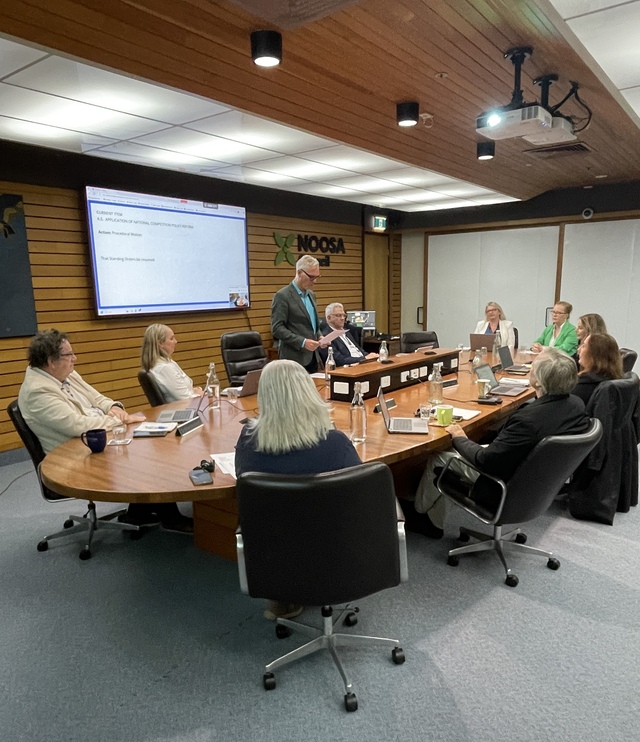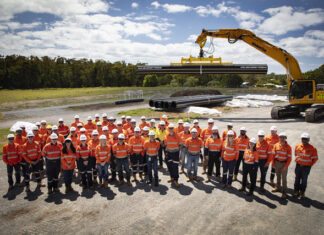Noosa residents on a minimum general rate will see a rate increase of 6.7 per cent or $2.35 a week, needed to cover increasing costs to council while maintaining services, Mayor Frank Wilkie said on Monday in delivering council’s $202.5 million 2025-26 budget.
“Noosa, like many local governments, has been hit hard by price increases for the materials, wages and services needed to deliver core business to the community,” he said.
“We managed to limit rates rises for most residential ratepayers by lifting the rate in the dollar for short-term accommodation (STA) properties.
“We kept both residential and STA rates in the dollar to levels that are still below that of larger councils in the region, which tend to have higher rates across all categories.
“This will make sure visitors contribute to the upkeep of the shire and the maintenance of public amenities.”
Council’s director of corporate services told the meeting the $202.5 million budget, which sets the financial direction for council for the next 12 months, underpinned the delivery of essential services, infrastructure projects and community programs and was comprised of $151.6m for operating expenditure on day to day services and $50.9m in capital investment.
In addition council is overseeing the finalising of $100m plus in disaster recovery programs funded by the state government, she said.
The Capital Works program which includes upgrades to Noosa Aquatic Centre, the Leisure Centre, and The J entertainment facility allocates:
$17.4 million – Roads, bridges and transport Infrastructure
$10.3 million – Resource recovery and waste management
$ 5.6 million – Community facilities and sports grounds
$6.3 million – Pathways, trail network, parks, playgrounds and public amenities
$4.4 million – Stormwater, bio basin and waterways
Changes to rates and charges in the budget include a 6.5 per cent increase in general rates, an 8.5 per cent increase in waste utility charge and an increase from $70 to 75 for the environment levy.
“Council continues to be impacted by the same inflationary pressures that residents are experiencing, rising costs across labour, asphalt, concrete, utilities, construction materials and service contracts,” the director said.
“On top of that we are factoring in a significant increase in labor costs as a result of an in-principle certified agreement.”
“Despite this we are presenting a balanced budget with forecast operating surplus of $77,000.”
Cr Wilkie said annual rate increases allowed Council to build the infrastructure and maintain critical services the community needed.
“We put a freeze on most levies, apart from a $5 increase in the environment levy and are continuing to work with volunteer groups like Zero Emissions Noosa and the Noosa Biosphere Reserve Foundation, who do exceptional work for the community.”
Cr Wilkie said full pensioner rebates of a maximum of $230 were available for eligible property owners in the shire.
“We are also retaining the 5 per cent early rates payment discount, which is a $72.55 saving for most ratepayers,” Cr Wilkie said.
“These measures help those who need it most,” he said.
Cr Wilkie said the cost to manage the shire’s waste continues to rise.
“The waste charge is now $438 per ratepayer which helps continue investment in resource recovery, improve recycling rates and covers costs of increased contract and labor costs,” he said.
“The state-imposed waste levy continues to increase, resulting in a jump of about $22 per tonne for residents.”
During the budget meeting Cr Nicola Wilson raised the consequences of low rate increases on future budgets and service delivery.
“Noosa has had a history of keeping rate increases low and while that’s great for ratepayers at the time and we enjoy having a lower minimum rate than our neighbouring councils. There is a point where lower rates mean there is less to spend, making it harder for those levels to be maintained and harder to attract and retain staff,” she said.
“Those low rate increases of the past can cause increased costs later down the track.”
Cr Wilson said the big jump of about $10.4m in operating expenses from $141.1m in 2024-25 to $151.5m in 2025-26 was a reflection of increases of about $5m in wages, $3m in materials and services and $1.5m in depreciation expenses.
Cr Wilson said with grants expected to decrease this year council’s main way to generate income was through rates, levies and charges, fees and charges such as development fees, and sales from holiday parks and the resource recovery centre.
Cr Wilson described the budget as one founded in basic delivery with highlights including small commercial rate increases to encourage small business, incentives for second dwellings with lowered rates and infrastructure charges removed, the maintaining of pensioner discounts and identifying STAs as commercial enterprises, increasing their rates to help maintain amenity and encourage their return to residential use.
“Ratepayers should expect to have basic services met and see the value for their rates bill,” she said.
“For me this budget is founded in the basics, no new strategies, plans or initiatives, minor increases in headcount, only in much needed positions in community services and customer service to make interactions with council more efficient, completing what we started and what we committed to with a Destination Management Plan, Short Stay Letting, Parking Plan, customer service and housing initiatives.”
Cr Wilkie said the budget maintains quality services, keeps pace with rising costs and ensures a reasonable surplus of $77,000 to cement our financial sustainability.







